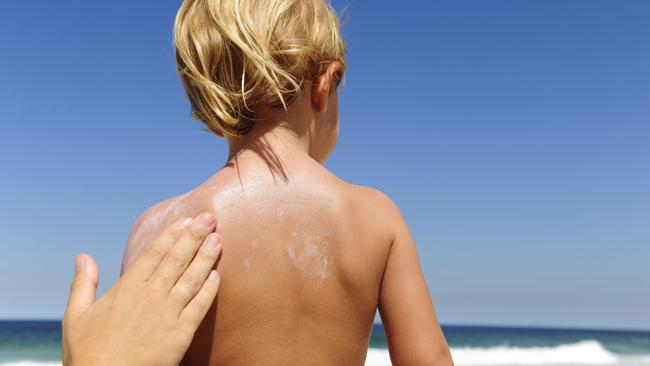Scientists gather in Brisbane to set a national policy on sunscreen use
SOME of Australia’s top scientists will gather in Brisbane during the next two days hoping to reach a consensus on a national sunscreen policy.
QLD News
Don't miss out on the headlines from QLD News. Followed categories will be added to My News.
- Daily sunscreen would slash melanoma rates
- Qld schools fail in sun protection
- Shunning slip, slop, slap
ADVERSE reactions, products containing nanoparticles and vitamin D deficiency will be among the controversies Australia’s top sun protection experts will debate at a Sunscreen Summit in Brisbane starting today.
The researchers will review the latest evidence in skin cancer prevention and discuss ways to debunk some of the myths and misinformation around sunscreens to provide a clear message to the public on optimum sunscreen use.
Their hope is to encourage more Australians to better protect themselves from skin cancer risk through the development of national consensus guidelines on the best use of sunscreens, including how much to use and how often to reapply it.

The two-day summit, organised by the Australian Skin and Skin Cancer Research Centre, will be convened by respected public health expert David Whiteman.
While acknowledging concerns about sunscreen safety among some consumers, Professor Whiteman said all the evidence showed regular sunscreen use was highly effective in preventing skin cancer.
“Adverse reactions are rare and are almost always minor. By trying different brands, people will find a product that works for them,” he said, adding research showed no issues linked to sunscreens containing nanoparticles.
“This is an area that’s been looked at intensively. All the data, to date, indicates they’re safe and if people still have concerns, there are plenty of products available that don’t use nanoparticles.”
Prof Whiteman, of the QIMR Berghofer Medical Research Institute, said studies had also found worries about sunscreen use being linked to vitamin D deficiency were unwarranted.
He said Australian rates of skin cancer remained “way too high”, yet many people were neglecting to use sunscreen altogether and others were failing to use it correctly.
Prof Whiteman said research suggested about 85 per cent of Australians failed to apply sunscreen correctly.

“My reading of all the evidence is that the reason people have problems with sunscreen is they often don’t put it on sufficiently and they don’t reapply it when they’re out in the sun,” Prof Whiteman said.
Today’s invitation-only summit coincides with the release of the latest results from the Cancer Council Australia’s national sun protection phone survey which found Australians are still confused on issues such as whether cloud cover and temperature levels impact on their risk of sunburn.
“It’s important for us to reinforce the message that it’s ultraviolet radiation that is the major cause of skin cancer – and that UV can’t be seen or felt,” said Heather Walker, chair of the Cancer Council’s national skin cancer committee. “In Autumn, temperatures in some parts of the country are cooling, but UV levels right across Australia are still high enough to cause serious sunburn and the skin damage that leads to cancer.”
The survey contains the responses of more than 3600 Australian adults interviewed in the summer of 2016-17.


